First Tower Silo Designated A Historic Landmark Of Agricultural Engineering. The First Tower Silo In America Was Erected Near This Site On The Hatch Farm, One Half-Mile East Of Spring Grove, Illinois. Fred L. Hatch And His Father, Lewis Hatch, Erected This Silo In October 1873, After Fred Graduated From The Illinois Industrial University. (Now The University Of Illinois). Textbooks On Agriculture Were Scarce, And Professor Willard F. Bliss Translated French And German Pamphlets On Silage Production Wherein The Entire Corn Plant Was Buried In Pits, And This Inspired Young Hatch.
IL
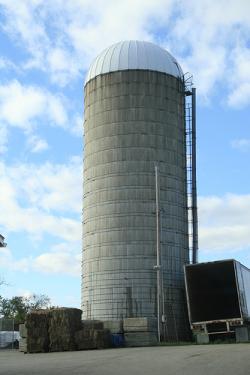
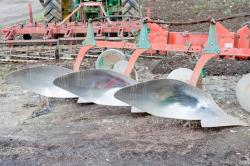
On this site in 1837 John Deere built the first successful self-scouring steel plow, thereby making a significant contribution to the development of American agriculture. Dedicated by American Society of Agricultural Engineers 1976
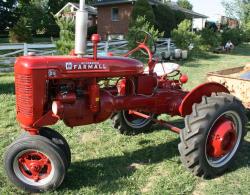
The First Successful Row Crop Tractor Invented by Bert R. Benjamin (ASAE Member) was Operated and Tested on this Farm in 1923. Increased Row Crop Clearance and Overall Versatility Extending the Use of the Tractor to Cultivating, Accelerated the Conversion from Animal Power to Machine and Marked a New Era in American Agricultural Efficiency and Productivity. Dedicated by The American Society of Agricultural Engineers 1980
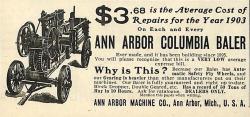
Designated an Historic Landmark of Agricultural Engineering. In the Shelbyville Area During the Spring of 1929, Raymore McDonald Designed and Developed the First Commercial Pick-Up Baler as Conceived and Financed by Horace Tallman and His Sons, Leslie R. and Gentry L. These Balers were Marketed for Many Years by the Ann Arbor Machine Company of Shelbyville. This Concept of Field Processing of Farm Forages Made a Significant Contribution to the Efficiency and Economy of Mechanized Forage Harvesting in the World's Agriculture.
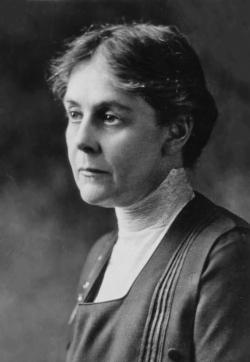
In 1897, Dr. Alice Hamilton (1869-1970) came to Hull-House, a social settlement founded to address the needs of immigrants living on Chicago’s Near West Side. Through living and working in the Hull-House neighborhood, she identified occupational diseases plaguing those who worked in the “dangerous trades”: rubber, dyes, lead, enamelware, copper and mercury production, and explosives and munitions. Collaborating with the U.S. Department of Labor, Hamilton documented the occupational diseases from which these workers suffered.
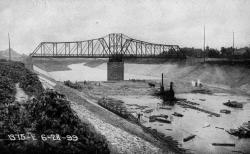
Until 1900, the Chicago River drained into Lake Michigan, along with all the sewage from the city; and the Des Plaines River west of Chicago emptied into the Illinois River, which eventually flows to the Mississippi. Chicago residents drew their drinking water from polluted areas of the lake near the mouth of the Chicago River, leading to outbreaks of typhoid and other waterborne diseases.
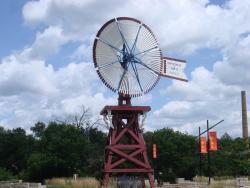
Collection of restored windmill operated waterpumps made at one of the three windmill manufacturing companies in Batavia.
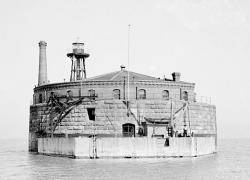
Constructed to provide a safe, potable water supply for the citizens of Chicago, Ellis Chesbrough's Chicago Water Supply System was the first major system to utilize offshore intake systems. The system includes the landmark Chicago Water Tower and the Chicago Avenue Pumping Station. Its subaqueous tunnel was a pioneering effort in American civil engineering.
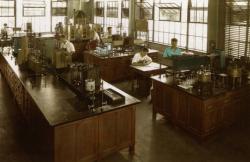
This research and development complex was established by the founders of Universal Oil Products (later named UOP) to develop key products for the oil-refining industry. The processes created here profoundly affected the refining, treatment and conversion of crude oil and the development of the petroleum and petrochemical industries. Conceived as a combination of quiet academic retreat and industrial plant, Riverside attracted many of the world's leading petroleum scientists and a dedicated support team. Between 1921 and 1955, Riverside research resulted in 8,790 U.S. and foreign patents.
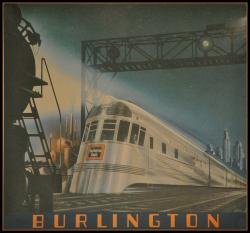
In the late 1920s, the automobile cut railroad passenger service by more than half. The debut of the Pioneer Zephyr heralded a comeback in 1934, touring the country and being seen by some two million people in 222 cities.
Innovations
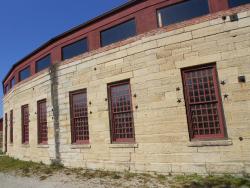
The Chicago, Burlington, & Quincy Railroad was the first railroad to link Chicago and the Mississippi River, in the 1850s. This forty-stall roundhouse, large even for its time, became a major center for railroad activity for the CB&Q. It served as a repair and construction facility from…
Read More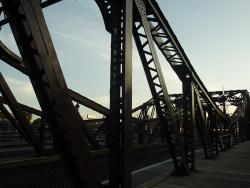
In 1899, engineers from the City of Chicago's Division of Bridges and Viaducts performed a survey of moveable bridge design in the U.S. and Europe. Their study led to the conclusion that the unusual trunnion bascule design would best meet their needs.
The Cortland Street Drawbridge…
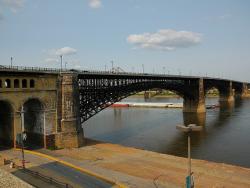
In the decade following the Civil War, the Mississippi River began to lose its standing as the primary transport artery in the Midwest. Railroads were taking over, and Chicago was rapidly becoming the center of Midwestern commerce. The Eads Bridge was the first major railroad link over the…
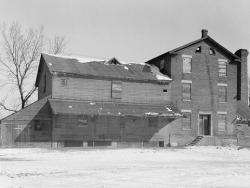
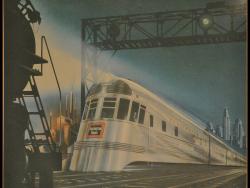
In the late 1920s, the automobile cut railroad passenger service by more than half. The debut of the Pioneer Zephyr heralded a comeback in 1934, touring the country and being seen by some two million people in 222 cities.
The Zephyr was the first diesel-powered, stainless-steel…
Read More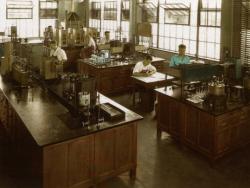
This research and development complex was established by the founders of Universal Oil Products (later named UOP) to develop key products for the oil-refining industry. The processes created here profoundly affected the refining, treatment and conversion of crude oil and the development of the…
Read More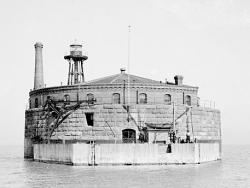
Constructed to provide a safe, potable water supply for the citizens of Chicago, Ellis Chesbrough's Chicago Water Supply System was the first major system to utilize offshore intake systems. The system includes the landmark Chicago Water Tower and the Chicago Avenue Pumping Station. Its…
Read More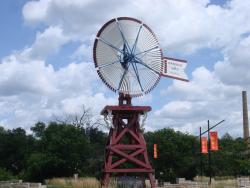
Collection of restored windmill operated waterpumps made at one of the three windmill manufacturing companies in Batavia. In late 19th century - early 20th century, Batavia became known as…
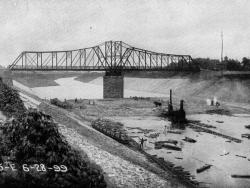
Until 1900, the Chicago River drained into Lake Michigan, along with all the sewage from the city; and the Des Plaines River west of Chicago emptied into the Illinois River, which eventually flows to the Mississippi. Chicago residents drew their drinking water from polluted areas of the lake…
Read More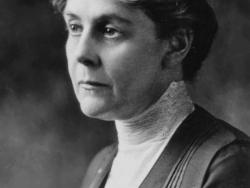
In 1897, Dr. Alice Hamilton (1869-1970) came to Hull-House, a social settlement founded to address the needs of immigrants living on Chicago’s Near West Side. Through living and working in the Hull-House neighborhood, she identified occupational diseases plaguing those who worked in the “…
Read More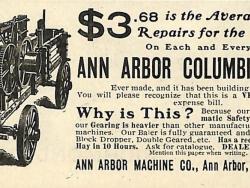
Designated an Historic Landmark of Agricultural Engineering. In the Shelbyville Area During the Spring of 1929, Raymore McDonald Designed and Developed the First Commercial Pick-Up Baler as Conceived and Financed by Horace Tallman and His Sons, Leslie R. and Gentry L. These Balers were…
Read More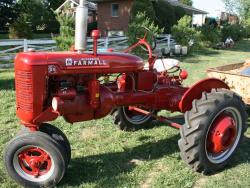
The First Successful Row Crop Tractor Invented by Bert R. Benjamin (ASAE Member) was Operated and Tested on this Farm in 1923. Increased Row Crop Clearance and Overall Versatility Extending the Use of the Tractor to Cultivating, Accelerated the Conversion from Animal Power to Machine…
Read More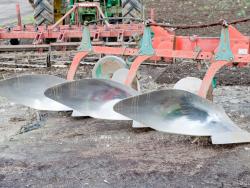
On this site in 1837 John Deere built the first successful self-scouring steel plow, thereby making a significant contribution to the development of American agriculture. Dedicated by American Society of Agricultural Engineers 1976
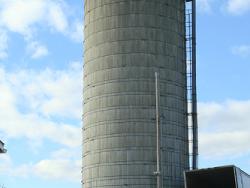
First Tower Silo Designated A Historic Landmark Of Agricultural Engineering. The First Tower Silo In America Was Erected Near This Site On The Hatch Farm, One Half-Mile East Of Spring Grove, Illinois. Fred L. Hatch And His Father, Lewis Hatch, Erected This Silo In October 1873, After Fred…
Read More

